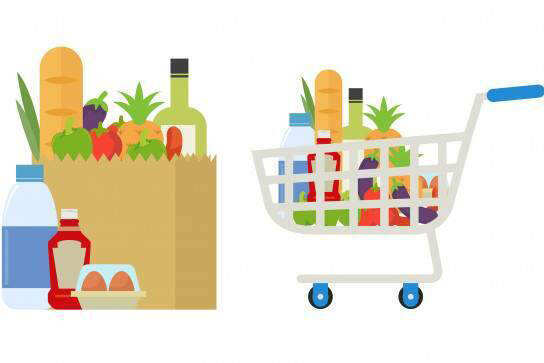Spain: How food-shopping behavior has changed in a decade
Less fresh products and more retailer brand in their baskets. Spaniards are visiting stores less frequently and reducing their spending on consumer goods due to the rise of the Mercadona and Lidl format.

Ten years ago, four out of ten euros spent by Spaniards in their grocery basket went to traditional stores. Besides that, Spanish consumers went out more often to do their shopping and spent a large part of their budget on well-known consumer brands.
In the last decade, some trends, which have turned the way Spanish buy food around, have been gaining ground. Despite the rise in inflation, less is spent on the shopping basket -due to the increase in retailer label products- and people no longer go the neighborhood store or the hypermarket, but to the supermarket (especially Mercadona), where they buy less fresh and more packaged products. And lately, a lot of the ready-to eat food.
Demographic challenge
These are some to the conclusions drawn by Kantar Worldpanel in a report on the evolution of FMCG (groceries, pet food and household and personal care products) in Spain over the last ten years. According to Florencio García, Retail Director for Iberia, the main challenge is demographic: “in ten years the population has barely grown by 600,000 people that stops food purchase growth in volumes. Meanwhile, the population of people above 65 years has grown by 1.3 million, with the changes in consumption patterns that this entails”, García said. “These trends have influenced the retail sector which has had to adapt to them”.
This demographic trend shows a today’s Spanish consumer significantly different from that of a decade ago. One of the most striking facts is that in 2019, the average number of visits was 246. That is 25 less than in 2010, despite the boom of local shops. According to García, the explanation lies in the fresh product purchase: ten years ago, Spaniards went to the traditional store and to the supermarket, while now “we solve the purchase, both for fresh and packaged food, in one visit to the supermarket”.
Less purchase in the traditional channel
In fact, in 2010, Spaniards spent 49.9% of their budget in supermarkets and now 61%. At the same time, traditional stores have been losing share. At the beginning of the decade, 41.1% of fresh product purchases were made in the traditional channel, compared to 30.7% in 2019. Including packaged products, this traditional channel has gone from 32.9% of grocery purchases to the current 24.9% in ten years.
Less purchase of fresh products
Fresh product also explains the drop in food expenditure over these ten years. In 2010, each Spaniard spent an average of 4,344 euros on groceries and, ten years later, 100 euros less. This is because fresh products have lost prominence in spending, going from 48% to 45.5% of the total. Regarding products, the most popular trend is that of takeaway food.
The rise of the retailer label
Another factor that explains the drop in expenditure is the rise of the private or retailer label, to which Spaniards devoted 870 euros in 2019, 164 euros more than in 2010. Nowadays the retailer label accounts for 37.7% of consumer spending, 1.4% more than a year earlier. Ten years ago, when the recession boosted these products, that percentage was 33.9%.
The private label growth has gone hand to hand with the supermarket chains that took most advantage of them –Mercadona, Lidl and Aldi- that together captured 37.1% of total spending in 2019, nine points more than a decade ago.
Other retailers
It is not just that traditional stores have lost quota. With the growth of the so-called short-assortment model, the hypermarket channel, dominated by Carrefour and Alcampo (Auchan), has been losing steam, going from a 14.6% share in 2010 to 13.5% in 2019.
A characteristic phenomenon of the Spanish retail sector are the regional chains, which in some areas have served as a bridge between the traditional store and modern distribution. None of them appears among the top groups, but all together account for 12.2% of expenditure, three points more than ten years ago.
In any case, the most outstanding growth of the decade is that of online shopping which currently accounts for 1.9% of total spending (0.3% more than in 2018), when ten years ago it was practically non-existent.
Source: El País